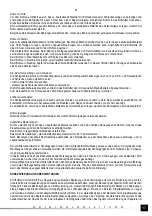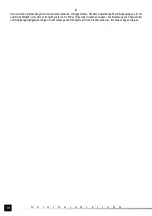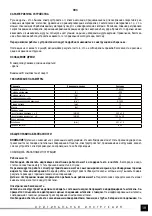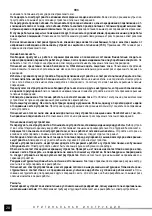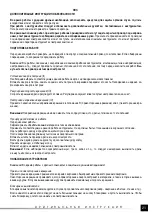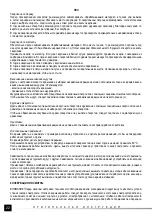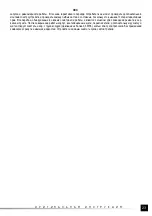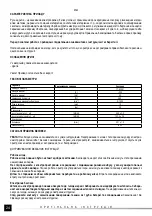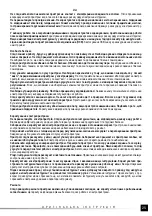
10
GB
O R I G I N A L I N S T R U C T I O N S
PROPERTIES OF THE TOOL
The electric drill is an ordinary electric tool, insulation Class II, which has been designed for drilling in distinct materials: metal,
wood and wooden products, plastics, etc. using drills adequate for the material with a cylindrical chuck. The hammer drill permits
continuous adjustments of rotation of the spindle, changing of the direction of rotation and drilling without hammering. It may
be also used to screw and remove screws, using the bits available on the market. A correct, reliable and safe functioning of the
grinder depends on its proper use, so:
Before you proceed to operate the grinder, read the manual thoroughly and keep it
.
ACCESSORIES
The package provided by the manufacturer should contain:
- electric drill
Attention! The tool is supplied without drills!
TECHNICAL PARAMETERS
Parameter
Unit of measurements
Value
Catalogue number
YT-82051
Nominal voltage
[V]
~230
Nominal frequency
[Hz]
50
Nominal power
[W]
580
Nominal rotation
[min
-1
]
0 - 1300
Size of the chuck
[mm]
10
Mass
[kg]
2,0
Level of noise
Acoustic pressure
[dB (A)]
92,0 ± 3,0
Acoustic power
[dB (A)]
103,0 ± 3,0
Class of insulation
II
Level of vibration
[m/s
2
]
4,31 ± 1,5
Grade of protection
IP20
GENERAL SAFETY CONDITIONS
NOTE!
Get acquainted with all the instructions below. Failure to observe them may lead to an electric shock, fire or injuries. The
notion of electric tool used in the instructions applies to all the tools which are powered with electric current, both wire tools and
wireless ones.
OBSERVE THE FOLLOWING INSTRUCTIONS
Place of work
The place of work must be properly illuminated and clean.
Disorder and poor illumination may be a cause of accidents.
Do not work with electric tools in explosive environments, or those which contain inflammable liquids, gases or vapours.
Electric tools generate sparks, which may cause a fire in case of contact with inflammable gases or vapours.
Do not allow children and outsiders to the place of work.
A lack of concentration may result in a loss of control over the tool.
Electric safety
The plug of the power supply cable must fit the mains socket. Do not modify the plug. Do not use any adapters whatso-
ever in order to adapt the plug to the socket.
Unmodified plug which fits the socket reduces the risk of an electric shock.
Avoid contact with grounded surfaces, such as pipes, heaters and refrigerators.
Grounding of the body increases the risk
of an electric shock.
Do not expose electric tools to precipitation or humidity.
Water and humidity which gets into the electric tool increases the
risk of an electric shock.
Do not overload the power supply cable. Do not use the power supply cable in order to carry the tool or to connect and
disconnect the plug from the mains socket. Avoid contact of the power supply cable with heat, oils, sharp tools and
moving elements.
Damage to the power supply cable increases the risk of an electric shock.
In case work is realised outside closed areas, it is necessary to use extension cords designed for applications outside
closed areas.
Using a correct extension cord permits to reduce the risk of an electric shock.
If operating a power tool in a damp location is unavoidable, use a residual current device (RDC) protected supply.
Use of
an RCD reduces the risk of electric shock.
Содержание YT-82051
Страница 20: ...20 RUS...
Страница 21: ...21 RUS II III V IV R L...
Страница 22: ...22 RUS L 60 o C...
Страница 23: ...23 RUS 0 3 MPa...
Страница 25: ...25 UA...
Страница 26: ...26 UA II III VI IV R L...
Страница 27: ...27 UA L 60o C a E a 0 3 MPa...

















